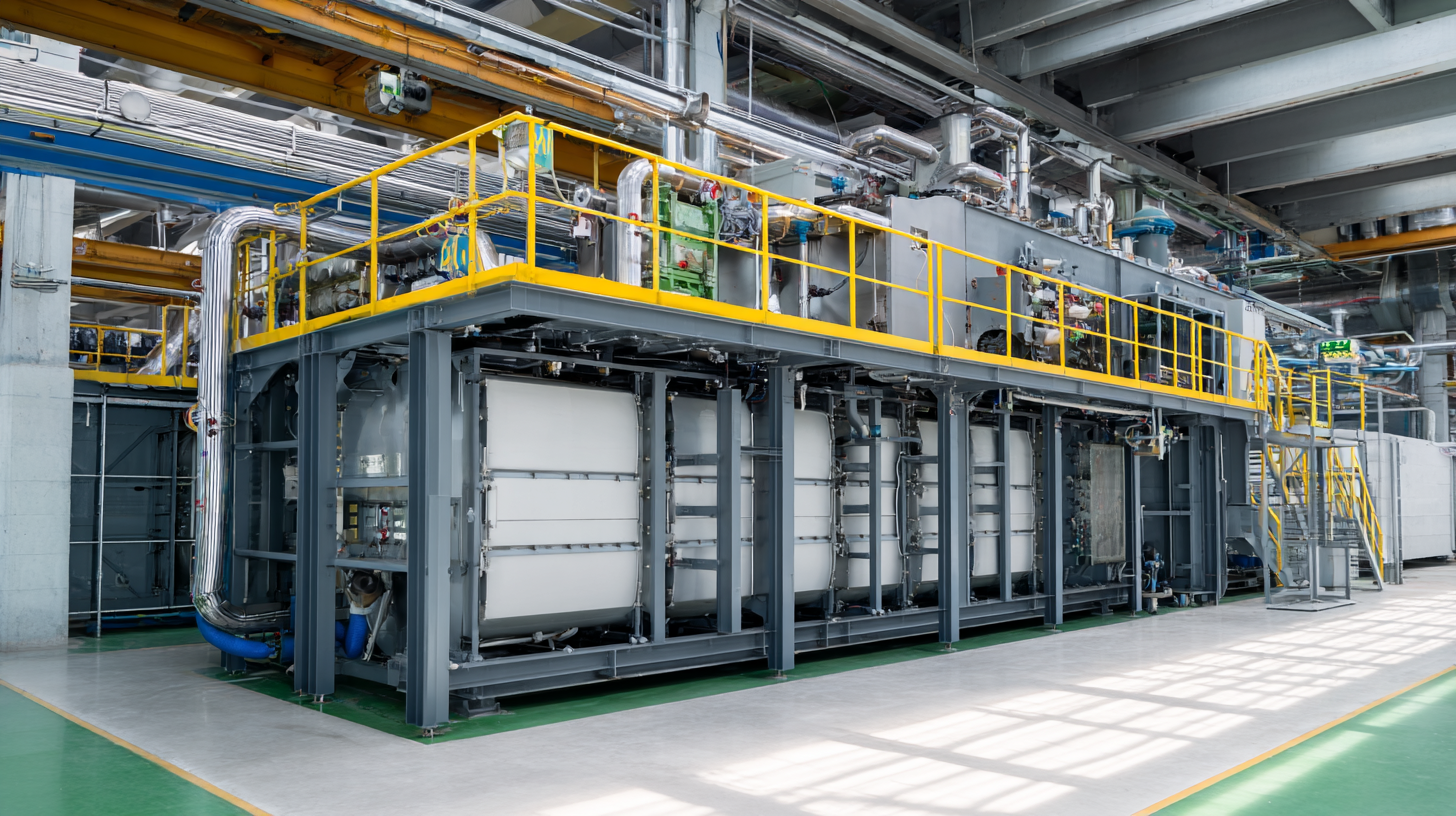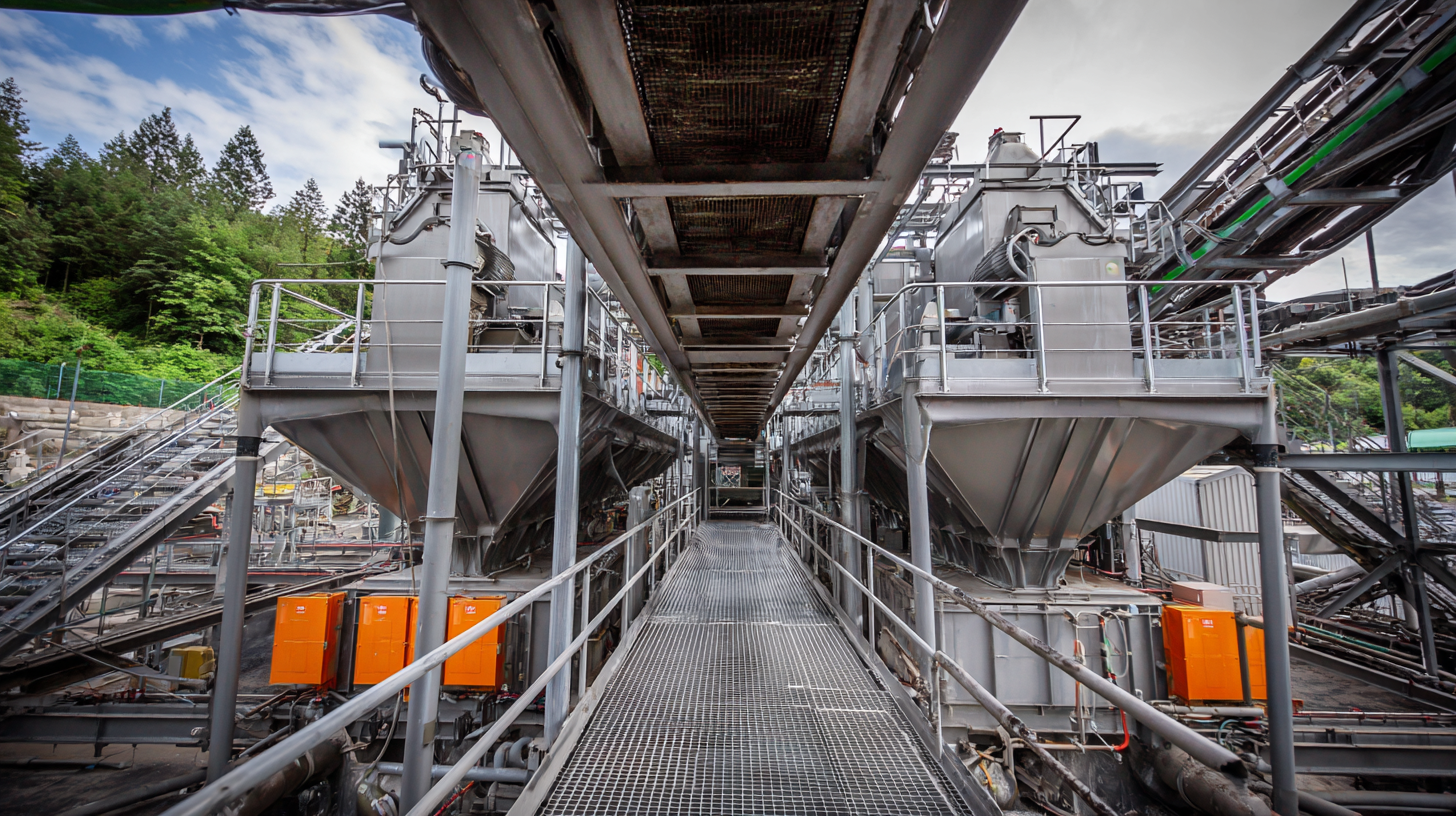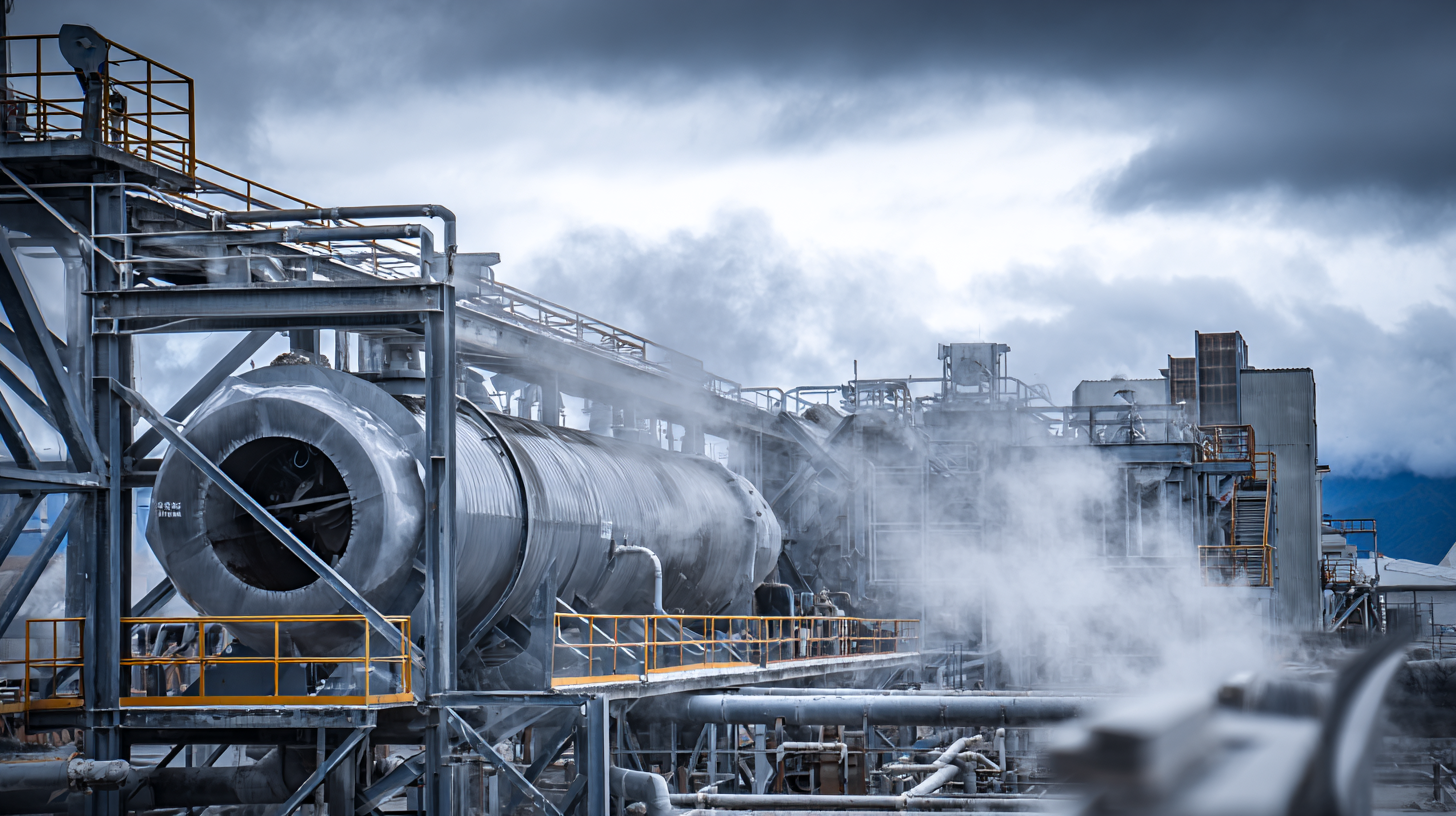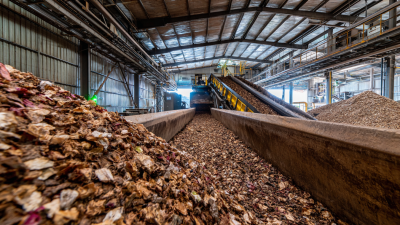In today’s quick-shifting world of wastewater management, there's a real buzz around finding better, more efficient ways to handle sludge. I mean, did you see that report from Research and Markets? They say the global market for sludge management could hit around $20 billion by 2025! A big part of this hype is due to the growing push for sustainable wastewater solutions. One area catching a lot of attention is High-Speed Sludge Drying Techniques—companies are really focusing on these to boost their processes and stay ahead of tough environmental rules.

APEX Company, in particular, is leading the charge here. They’re all about top-notch sludge drying and conveying gear, and honestly, they’ve made quite a name for themselves—not just in China but worldwide. Customers trust them because they deliver solid quality and performance every time. In this blog, I want to dive into some practical strategies to improve those High-Speed Sludge Drying Techniques, so businesses can keep up and stay competitive globally.
These days, the world of wastewater management is changing pretty fast, and high-speed sludge drying tech is really starting to catch on everywhere. I’ve seen reports that say the global market for sludge treatment could hit around $25 billion by 2025, and a big reason for that is these quicker drying methods. Things like microwave and infrared drying are becoming pretty mainstream — not just because they save time, but also because they use less energy. They do a great job of dewatering sludge better and cutting down on the leftover material, which makes them super appealing for cities and industries alike.
**Quick tip:** When you're looking into high-speed sludge drying systems, it’s worth weighing the energy costs against how much moisture you’re actually getting rid of. If you pick a good, efficient system, it can really cut down your operational expenses and help out the environment too.
Plus, smart technology is really changing the game. IoT systems with real-time data analytics give operators the chance to fine-tune the drying process — they can tweak things based on what's happening right now, saving energy and time. It’s a move toward sustainability that really helps because it cuts greenhouse gas emissions from traditional drying methods.
**Another tip:** Make sure your team gets proper training on these smart tools. That way, they can really take advantage of the data and make smarter decisions, keeping everything running smoothly and efficiently.
| Technology Type | Drying Efficiency (%) | Typical Energy Consumption (kWh/tDS) | Operational Cost ($/tDS) | Market Adoption Rate (%) |
|---|---|---|---|---|
| Conventional Thermal Drying | 85 | 300 | 50 | 40 |
| Belt Filter Drying | 90 | 250 | 45 | 35 |
| Fluidized Bed Drying | 95 | 200 | 40 | 50 |
| Microwave Drying | 98 | 180 | 60 | 25 |
| Solar Drying | 80 | 50 | 30 | 15 |
As the global markets get more competitive than ever, fine-tuning high-speed sludge drying processes really isn’t optional anymore — it’s essential for smart wastewater management. When we talk about how well these drying systems are performing, we usually look at key things like how much moisture they remove, how much energy they consume, and how long the drying takes. A recent industry report highlights some pretty exciting advances — with newer drying tech capable of dropping moisture levels from around 85% all the way down to just 10%. That’s a huge win because it really boosts the material's value on the market.
At APEX, we totally get that making sludge drying more efficient is a big deal for our clients. So, if you're looking to get the best results, here are a couple of tips: First up, invest in top-notch drying systems that use less energy but still give you high output. Our equipment is built to strike that perfect balance between performance and being eco-friendly — helping you hit your environmental goals without breaking the bank. Second, don’t forget about regular maintenance. A quick check-up now and then keeps everything running smoothly. Even small inefficiencies can add up and end up wasting a lot of energy over time.
Honestly, data shows that smart sludge drying tech can cut down operational costs by up to 30%. Keep a close eye on those KPIs — it’s the best way to find any performance snags and make targeted improvements. Our innovative drying and conveying solutions are designed with these key metrics in mind, so our customers not only stay competitive but actually thrive in this tough global landscape.
You know, the global market for sludge drying solutions is getting more and more diverse these days. It’s really shaped by different regulations, environmental worries, and new tech developments. Every region faces its own set of challenges — like, developed countries are really pushing for sustainability and recycling, so they’re looking for high-tech drying methods that can remove moisture effectively but also recover useful materials. To succeed here, providers need to tailor their solutions to fit these specific regional needs, or they might miss out on capturing market share.
On the flip side, emerging economies often deal with pretty basic waste management systems. Their main focus tends to be on keeping costs low while making sure drying is reasonably efficient. You see a lot of interest in options like solar-powered dryers or hybrid systems — those can be really flexible based on local conditions—and don’t break the bank. The key is for companies to really understand these different market demands, so they can develop targeted strategies. By doing that, they’ll not only meet local needs but also stay aligned with international standards. Ultimately, this helps make sludge drying more sustainable and scalable across the board — which is what everyone’s aiming for, right?
When it comes to managing sludge more effectively, trying out new materials and methods for drying is honestly a game-changer. You know, traditional drying methods often just don’t cut it when it comes to being efficient or eco-friendly. Lately, though, there have been some pretty exciting breakthroughs, like using advanced composite materials for better thermal insulation. These newer materials don’t just save energy—they actually make the drying process more even and faster by holding heat better and spreading it around. Plus, throwing in things like aerogels or phase change materials can really cut down drying times, which makes the whole operation run smoother and save some cash too.
And there’s more – technologies like microwave drying and solar-powered systems are catching on fast. Microwave drying, for example, uses electromagnetic waves to get rid of moisture super quickly, which means you get more done in less time and use less energy. Solar-assisted setups are also pretty cool because they use renewable energy sources, helping us cut down on fossil fuel reliance and shrink our carbon footprint. By mixing these new materials and tech, industries aren’t just making sludge drying more efficient—they’re also doing their part to stay sustainable and environmentally friendly. It’s kind of exciting to see how these innovations are transforming the game!

High-speed sludge drying can be pretty tricky, mainly because of the unique physical and chemical quirks of the sludge itself. You know, how water molecules—both the free and the bound ones—are distributed makes a huge difference in how effective microwave drying actually is. Getting a good grasp of these properties can really help in fine-tuning the process so it works better for different types of sludge.
If you're looking to optimize your drying setup, here are a few tips. First off, check out the initial moisture levels and the physical characteristics of your sludge. That'll give you a good idea of which drying method—whether it's microwave, thermal, or even solar—is your best bet. Also, setting up a system to keep an eye on the moisture content as you go can make a real difference. Nowadays, cool tech like deep learning algorithms can help you make quick adjustments on the fly, making the whole process more efficient.
And here's a little bonus—thinking green! Adding eco-friendly practices, like turning sludge into biochar through pyrolysis, can boost sustainability. Biochar not only improves treatment but also tackles contaminants and promotes a circular economy. Going this route isn’t just good for the planet; it also positions your organization ahead of the curve in sludge management. So, combining these strategies can help you overcome some of the common hurdles and stay competitive in this evolving field.

So, when it comes to finding better ways to handle sludge drying, it's pretty exciting to see how this tech is evolving. With environmental concerns getting more urgent worldwide, there's a real push to develop smarter drying methods that don’t just save energy but also make the whole process work better. One cool direction is adding advanced sensors and automation into the systems—a real game-changer.
These tools can constantly monitor moisture levels and other key factors, and then automatically tweak the process on the fly. That kinda stuff can really help cut down energy use, save some cash, and lessen the environmental impact.
On top of that, exploring alternative energy sources like solar power or capturing waste heat seems super promising. By tapping into renewable energy, plants can rely less on traditional fuels, which is a win for sustainability. Some researchers are even experimenting with hybrid systems—mixing tried-and-true thermal methods with newer tech like microwave or infrared drying.
The results can be pretty impressive: faster drying times, larger volumes processed in less time, which is crucial if we want to meet the growing demands globally.
Overall, blending innovative technology with a focus on sustainability feels like the way forward for sludge drying in the future.
: High-speed sludge drying technologies are gaining traction due to their efficiency and lower energy consumption, with innovations like microwave and infrared drying becoming mainstream. These methods enhance the dewatering process and significantly reduce residual sludge volume.
The market is projected to reach USD 25 billion due to the increasing adoption of high-speed drying techniques that contribute to improved efficiency and cost-effectiveness in wastewater management.
IoT-enabled systems provide real-time data analytics, allowing operators to optimize drying times and energy usage, which helps reduce greenhouse gas emissions and enhance sustainability.
It's essential to evaluate the energy costs against the expected moisture reduction, as efficient systems can lead to substantial savings in operational costs and lessen environmental impact.
Anticipated advancements include the integration of advanced sensors and automation for real-time monitoring and adjustments, as well as exploring alternative energy sources like solar and waste heat recovery.
Investing in staff training is crucial for effectively utilizing smart technologies, enabling teams to maximize the benefits derived from data-driven decisions in sludge management.
Sustainability is fundamental as the focus shifts towards innovative drying methods that reduce energy consumption and enhance efficiency, aligning with global environmental concerns.
Hybrid systems that combine traditional thermal methods with advanced technologies like microwave or infrared drying can increase efficiency, reduce operational time, and allow for processing larger volumes of sludge rapidly.
Utilizing renewable energy sources can decrease reliance on traditional fuels, promote sustainability, and ultimately lower operational costs in sludge drying facilities.
When it comes to managing wastewater more efficiently, honing in on high-speed sludge drying techniques has really become a must for markets around the world. In this blog, I’m diving into what’s happening right now in these tech areas, especially focusing on the main performance markers that actually matter for making sludge drying better. As we adapt solutions to different global needs, we’re also seeing some pretty cool innovations—whether that’s new materials or fresh methods—that not only boost performance but are also better for the environment.
That said, it’s not all smooth sailing. There are definitely hurdles in high-speed sludge drying that need some creative thinking to sort out. By looking at what’s holding these processes back, we can figure out where things are headed next. And with companies like APEX—who are known for their top-notch sludge drying and conveying equipment—leading the charge, it’s clear that the future of wastewater treatment is bright, effective, and reliable worldwide.






